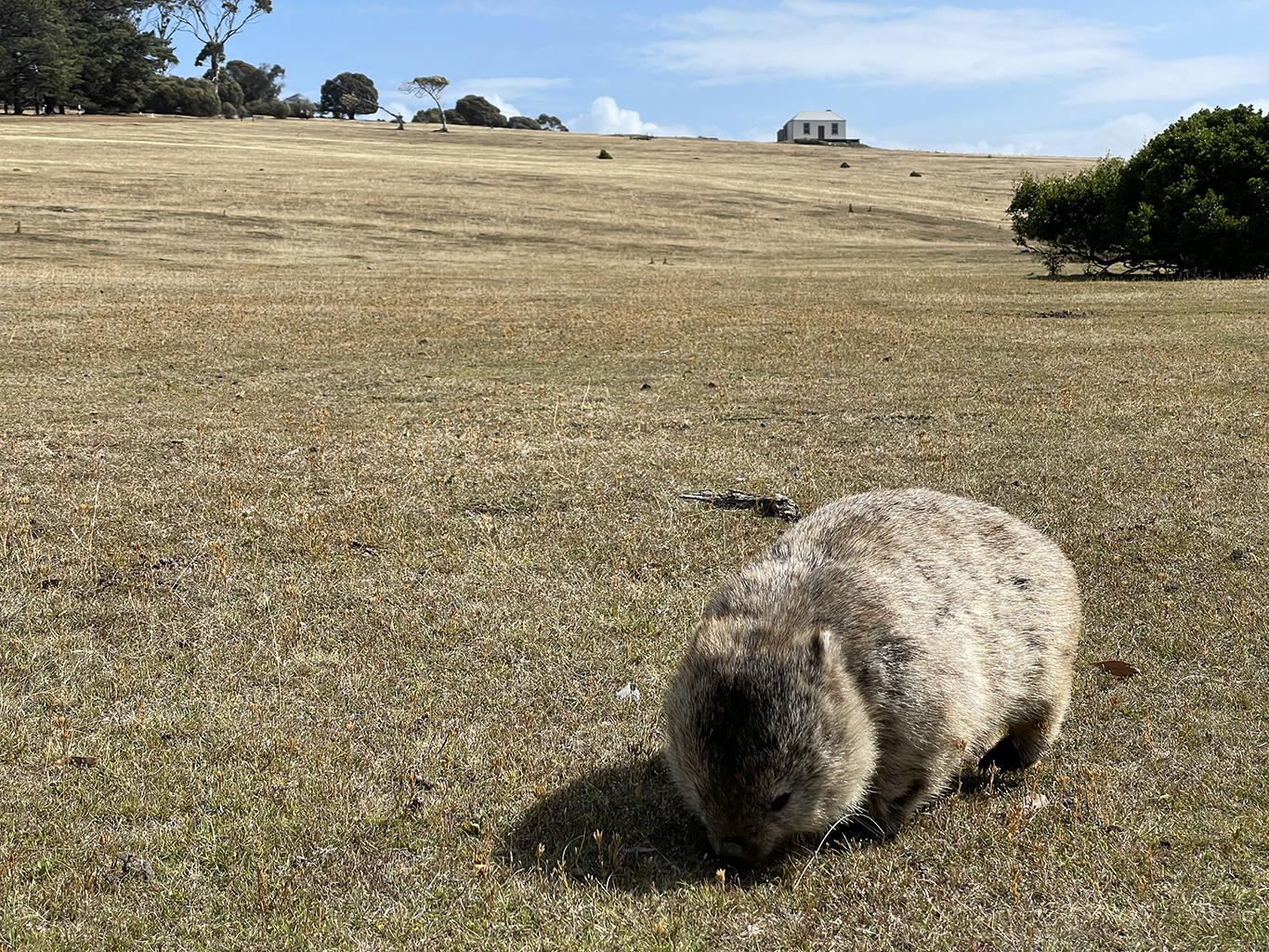
Maria Island
History and Nature
On our last trip to Tassie we visited Bruny Island which we loved, and when I read about Maria Island it went straight onto the bucket list. There was much discussion amongst our travel companions as to the pronunciation of Maria. The island was named after Anthony Van Diemen’s wife Maria so the origin is Dutch and it is pronounced Ma-rye-ah, like the singer – not like Maria from the Sound Of Music, just so you know….
Maria Island is off Tasmania’s east coast and is accessed by a 30 minute ferry ride from Triabunna. Whether you choose to camp or just spend a day you will be stunned by the natural wildlife, historical ruins, sweeping bays and dramatic cliffs.
The island is only 20 kms long by 13 kms wide and there are no cars, so exploring is done either on foot or by pedal power. You can bring your bike over on the ferry for a few extra dollars or hire one on the island. The whole island is a national park, so in addition to your ferry ticket you will need a National Parks Pass valid for the day of your visit.
There is something for everyone on Maria, your biggest problem will be deciding where to spend your time.
Our visit was during the week and outside school holidays, so we didn’t prebook anything and had no problems. I think if you were coming at a busier time it would be wise to prebook your ferry ticket and bike hire to avoid disappointment. You should also note that there are no shops on the island. Anything you need to eat or drink for your stay must be brought with you.
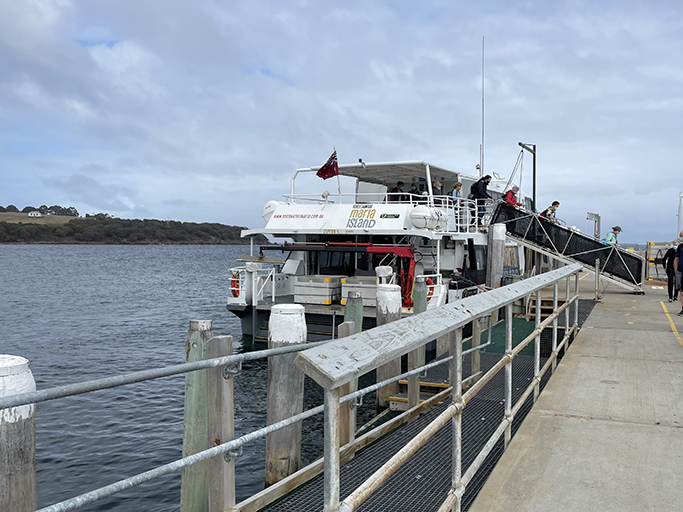
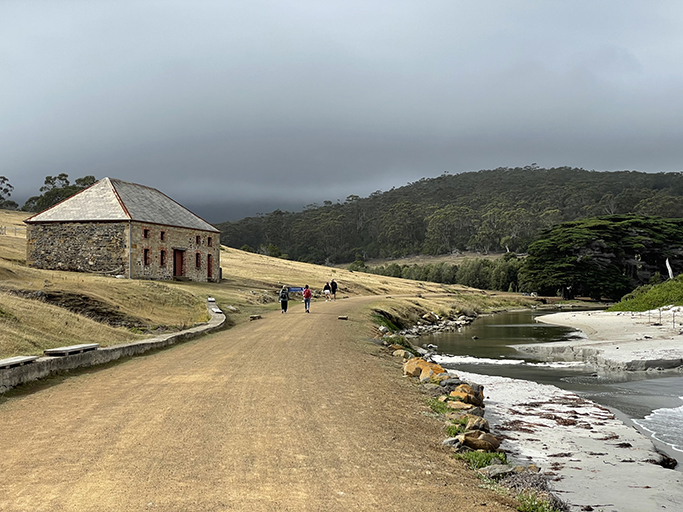
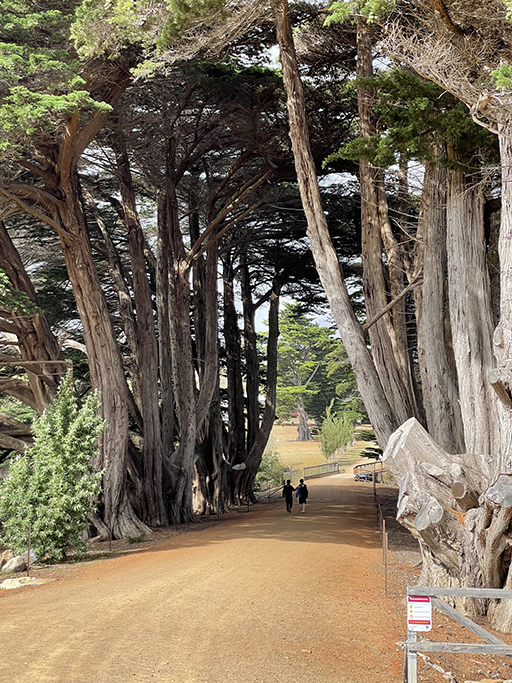
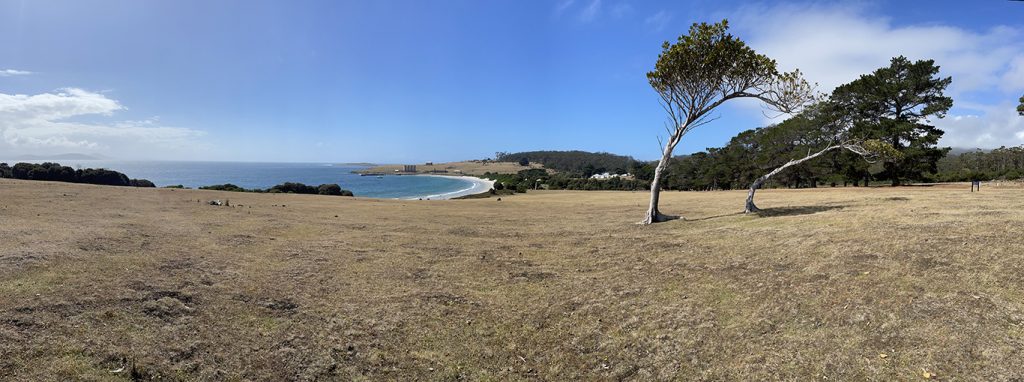
On your arrival head along from the jetty to the former Commissariat Store, the oldest building on the island. This is now the tourist information centre where the rangers are full of useful information to help you narrow down activities for your visit. It is about a 1km walk into Darlington from here, passing through a beautiful avenue of Cyprus where we had been told there were a mother and baby wombat hanging out. No luck sighting them this morning but later in the day we found them munching their way across the grass like a pair of little lawn mowers.
History
The aboriginal Puthikwilayti people were the custodians of this land and its surrounding waters for over 40,000 years before the first Europeans sighted the island in the 1640’s. No explorers were to set foot on its shores for another 150 years.
In the early 1800’s the island was used by whalers and sealers, and in 1825 a penal colony was set up to ease pressure on the convict facilities at Hobart Town. Starting with 50 male convicts, just 3 years later there were 145. The convicts constructed several buildings with local stones and bricks and farmed the land. The Commissariat Store and the prisoner’s barracks from this time still stand. In 1832 the colony was closed, and the convicts were moved to Port Arthur.
For a few years between 1842-1850 the colony reopened and during this period the convict settlement expanded dramatically. Over 800 convicts arrived on the island and an extensive building program began with most of the white lime-washed buildings being built during this time. The colony focused on agriculture and industry, quarrying lime and sandstone, and farming crops and sheep.
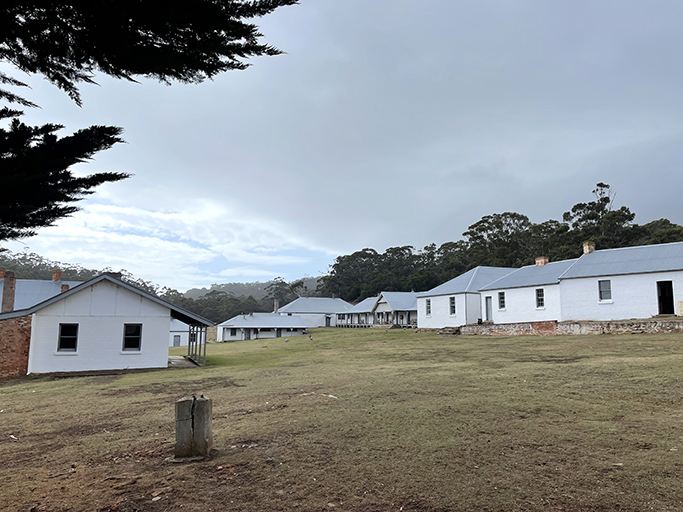
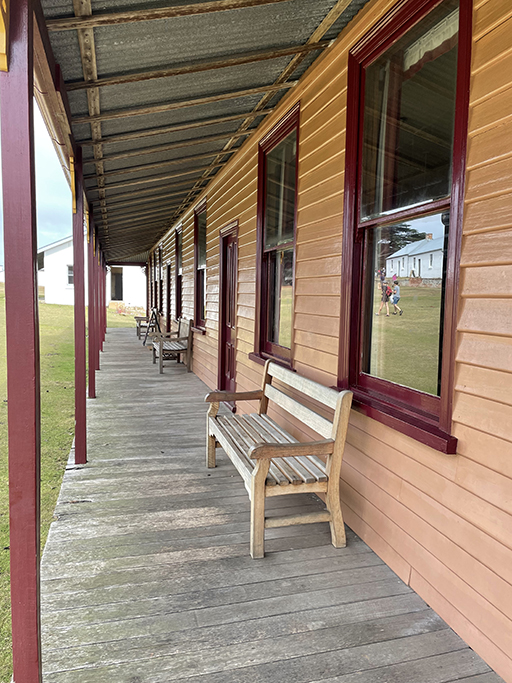
In 1884 an Italian silk merchant, Angelo Guilio Diego Bernacchi, leased the entire island and had some very grand plans, opening a hotel and coffee palace. But it didn’t last long and Bernacchi’s company went into liquidation just four years later.
In the early 1900 more than 150 men were employed on the island to extracting cement for the National Portland Cement Ltd. Another short-lived project though, closing after 6 years and leaving the island to the farmers once again. In 1972 the whole island became a National Park with the last of the sheep grazing finishing in 1981.
Today Darlington is recognised as the best example of a convict probation station in Australia. The beautifully restored town offers a wonderful glimpse back in time.
Wildlife
Maria Island is one of Tasmania’s great bird watching hot spots. There are 12 species of birds that are only found in Tasmania and 11 of them can be spotted here. We came across several groups of rare and unique Cape Barren geese grazing between the old buildings, they were not at all fazed by visitors wandering around them.
You are guaranteed see at least one wombat on your visit to Maria Island, while exploring Darlington we found our first furry fellow munching the grass amongst the historic buildings, and then around the corner another sleeping in the sun. The first of several wombats we would come across during the day. There are also pademelons, Forester Kangaroos, Bennetts wallabies and, if you are lucky, Tasmanian Devils (we were not so lucky – maybe next time if we stay overnight). The waters around Maria Island are a Marine Nature Reserve and at the right time of year you can spot seals and whales.
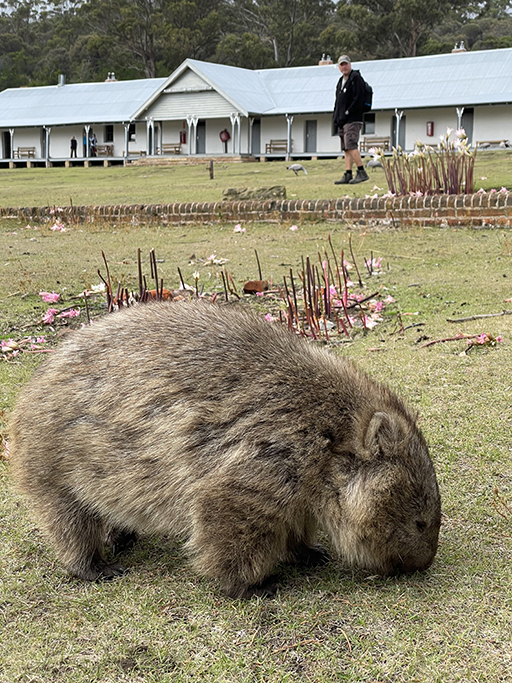
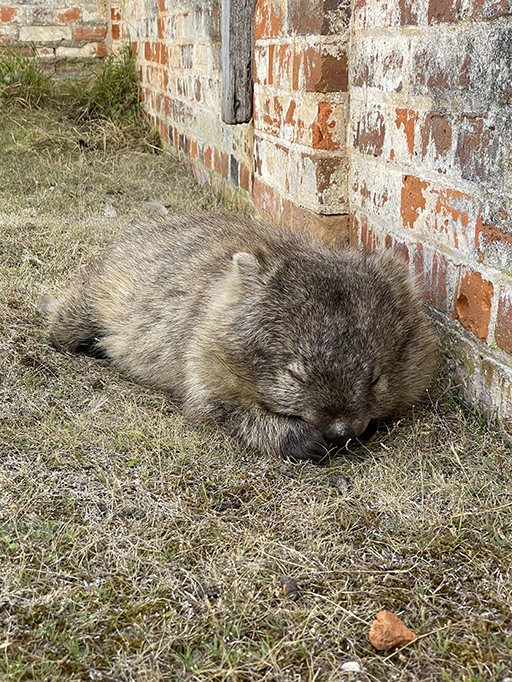
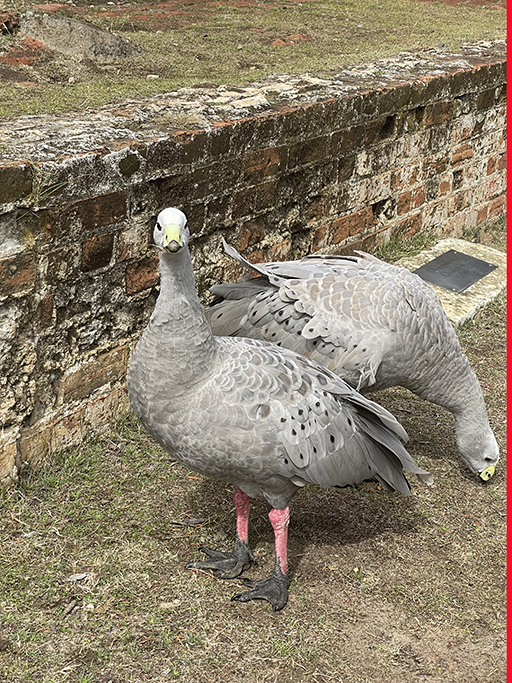
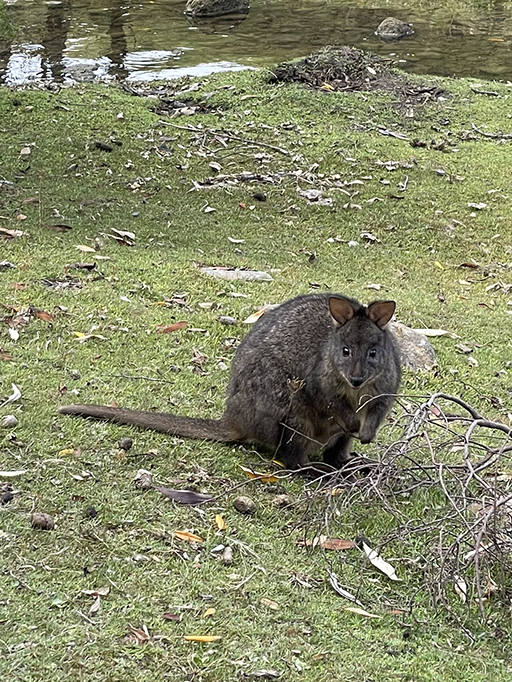
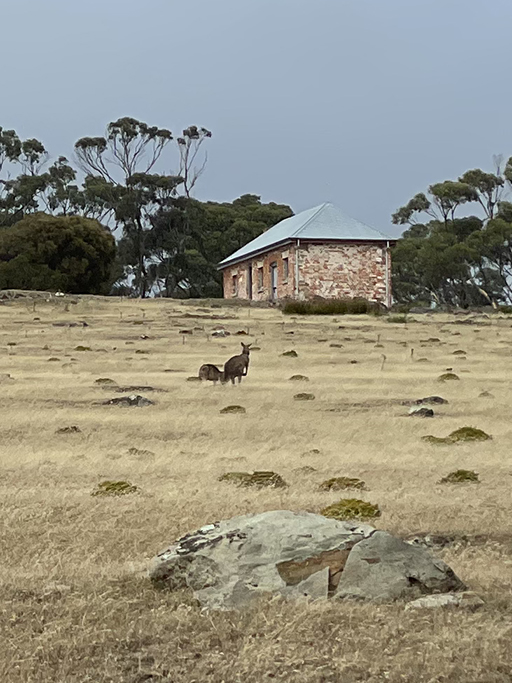
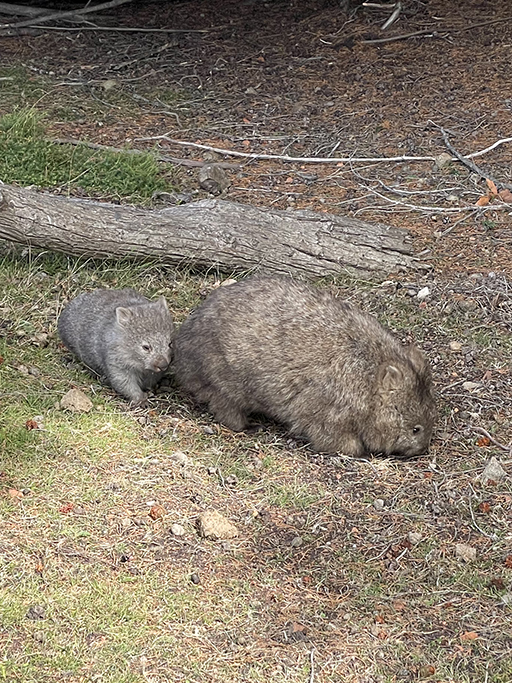
Walking
Once you have had your fill of history there are some great walks to choose from. Shorter walks include Reservoir Circuit, Fossil Cliffs and Painted Cliffs.
If you are after something more challenging, try Bishop and Clerk. The towering Dolerite peaks near the north of the island can be reached on an 11km, 4-5 hr return walk past majestic sea cliffs, grasslands and open forest. There is a scramble over boulders to reach the summit, but you will be rewarded with spectacular views.
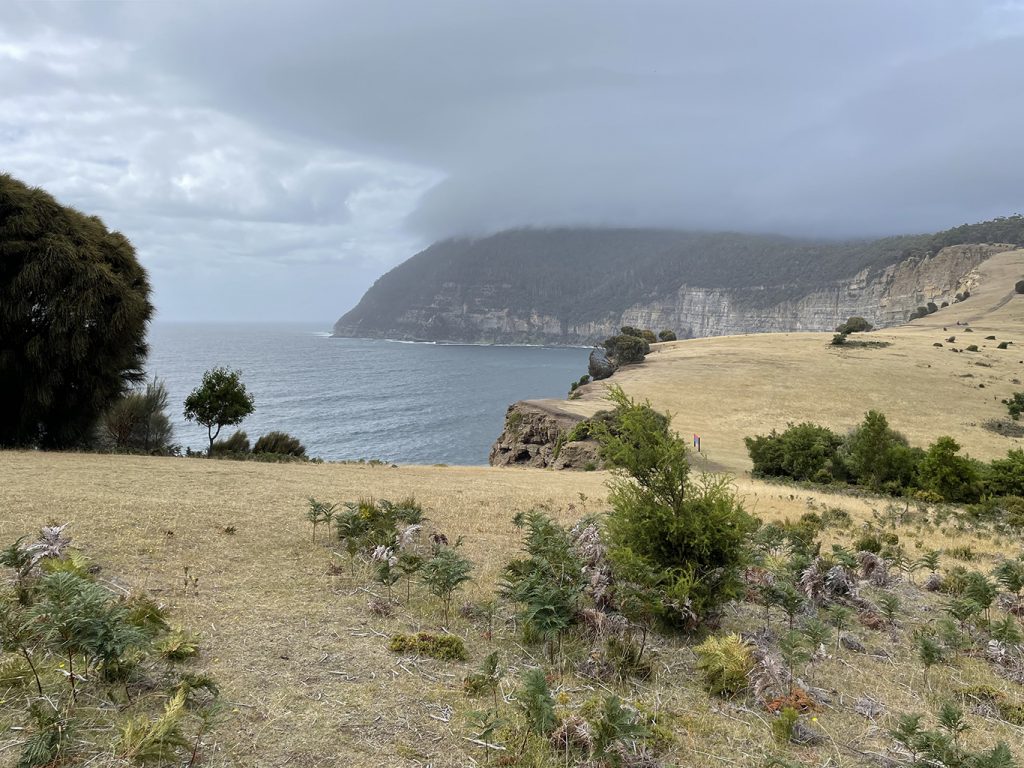
If you are a real glutton for punishment and have some good bushwalking experience the islands tallest peak, Mount Maria, is a 16km, 8hour walk from Darlington.
We managed to fit two of the shorter walks into our day – Fossil Cliffs and Painted Cliffs.
Fossil Cliffs is a three hour loop that takes you from Darlington to the northern edge of the Island where there are spectacular limestone cliffs and fossils to explore.
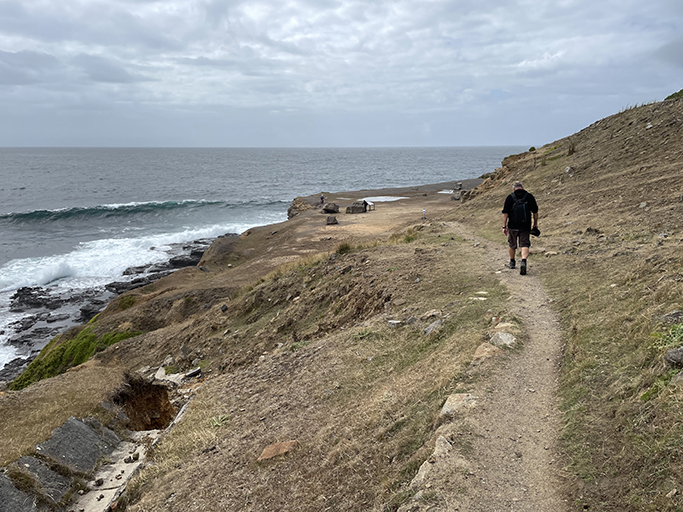
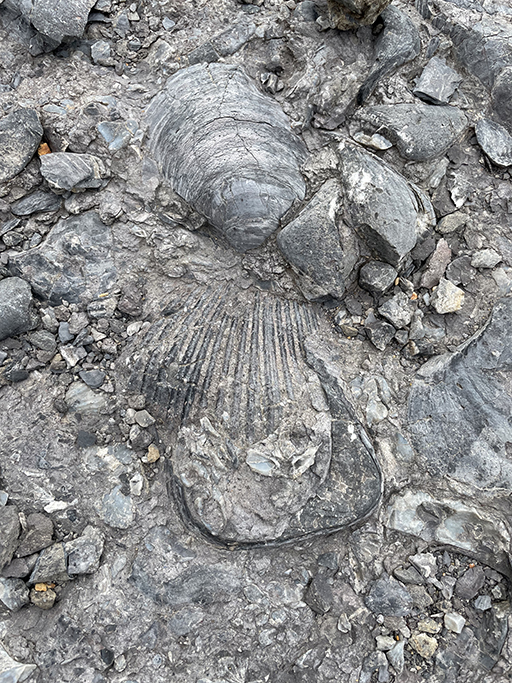
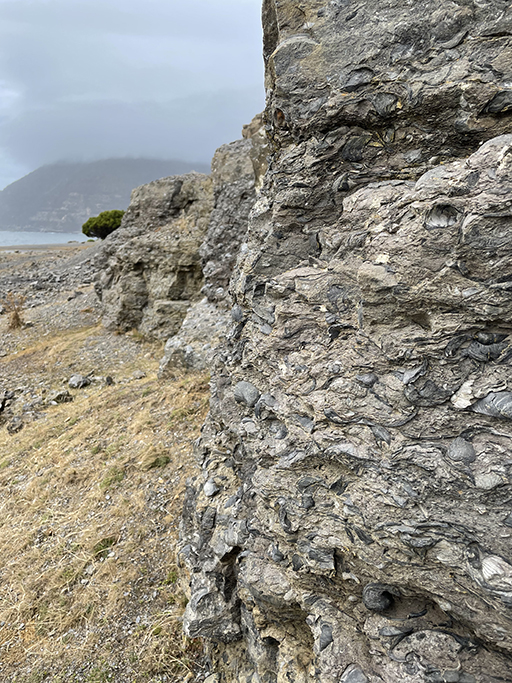
The iconic Painted Cliffs walk is an absolute must for any visitor to Maria Island. To fully experience the amazing colours and swirling patterns of the sandstone cliffs you need to explore the rock shelf within two hours of low tide so make sure you time this one well. Tide info is available at Tribianna and the tourist information centre on the island.
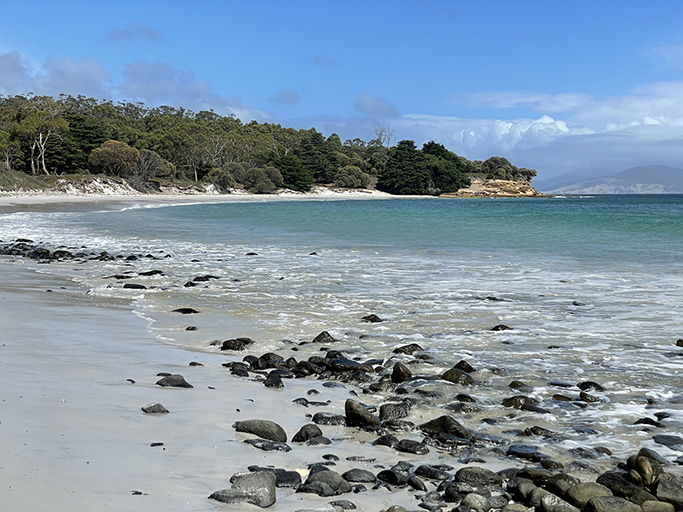

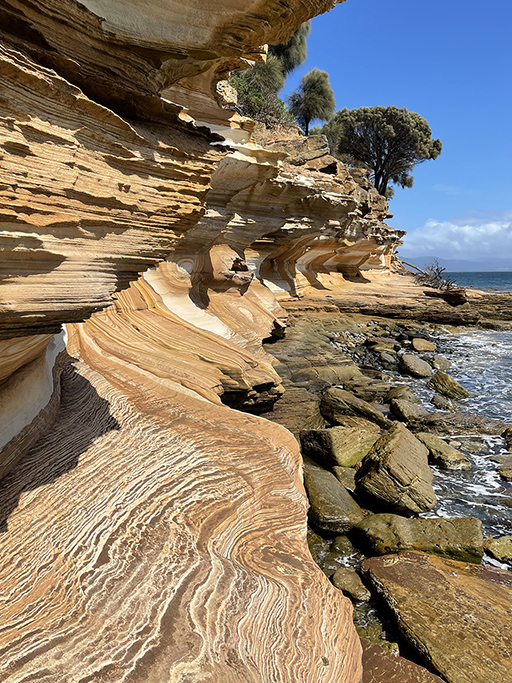

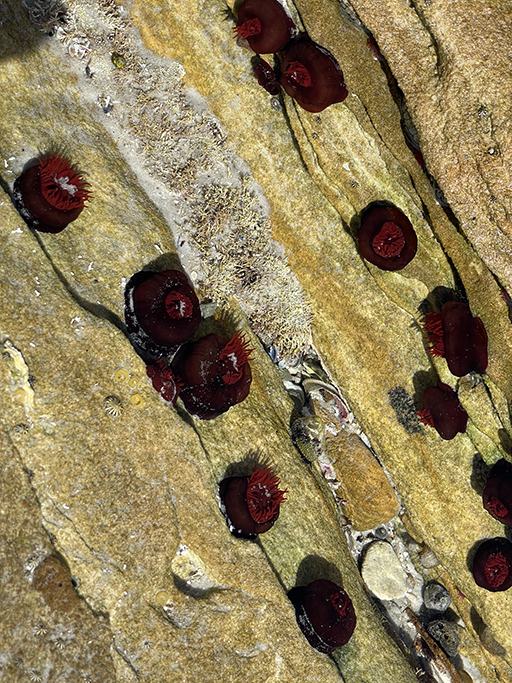
Staying longer
Basic bunk accommodation is available in the old penitentiary at Darlington, as well as camping at several sites around the island. There is a small fee for camping but no need to book – you can pay the camping fee at Maria Island Gateway where you catch the ferry from. Everything you need for camping will have to be brought over on the ferry and when you arrive you will find some handy trolleys at the jetty to cart your gear around in.
The closest camping area to the jetty is Darlington Campground which has bbqs, picnic tables and toilets. If you after something more remote there are campsites at Frenchs Farm and Encampment Cove, both are more than 3 hours walk from Darlington and offer toilets but not much else.
To find out more visit Parks & Wildlife Tasmania
If you have the opportunity to visit Maria Island you should take it. Long sandy beaches, turquoise water, clifftop views, abundant wildlife and a fascinating human history combine to make a perfect island adventure.
